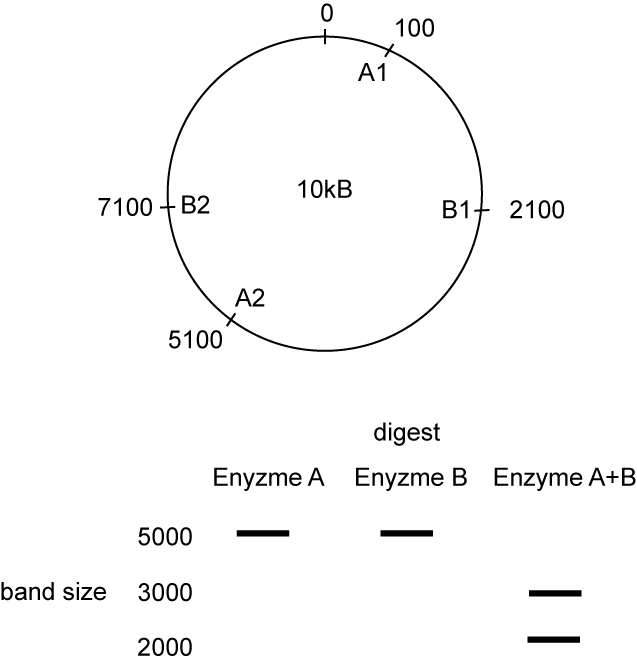I have trouble in solving this exercise.
Exercise
A circular plasmid of 10,000 base pairs (bp) is digested with two restriction enzymes,A and B, to produce a 3000 bp and a 2000 bp bands when visualised on an agarose gel. when digested with one enzyme at a time, only one band is visible at 5000 bp. If the first site for enzyme A(A1) is present at the 100th base, the order in which the remaining sites (A2,B1 and B2) are present is?
Why I struggle with this exercise
How can a 10,000bp plasmid produce 3000bp and 2000bp only on agarose gel. I mean where are the remaining 5000bp? I dont know if my concept is right.
Linearised bands on an agarose gel may be doublet. That can clear the doubts in problem. But still I dont know how to do a reasonable restriction mapping and find out sites of different enzymes.

